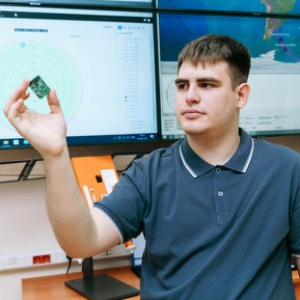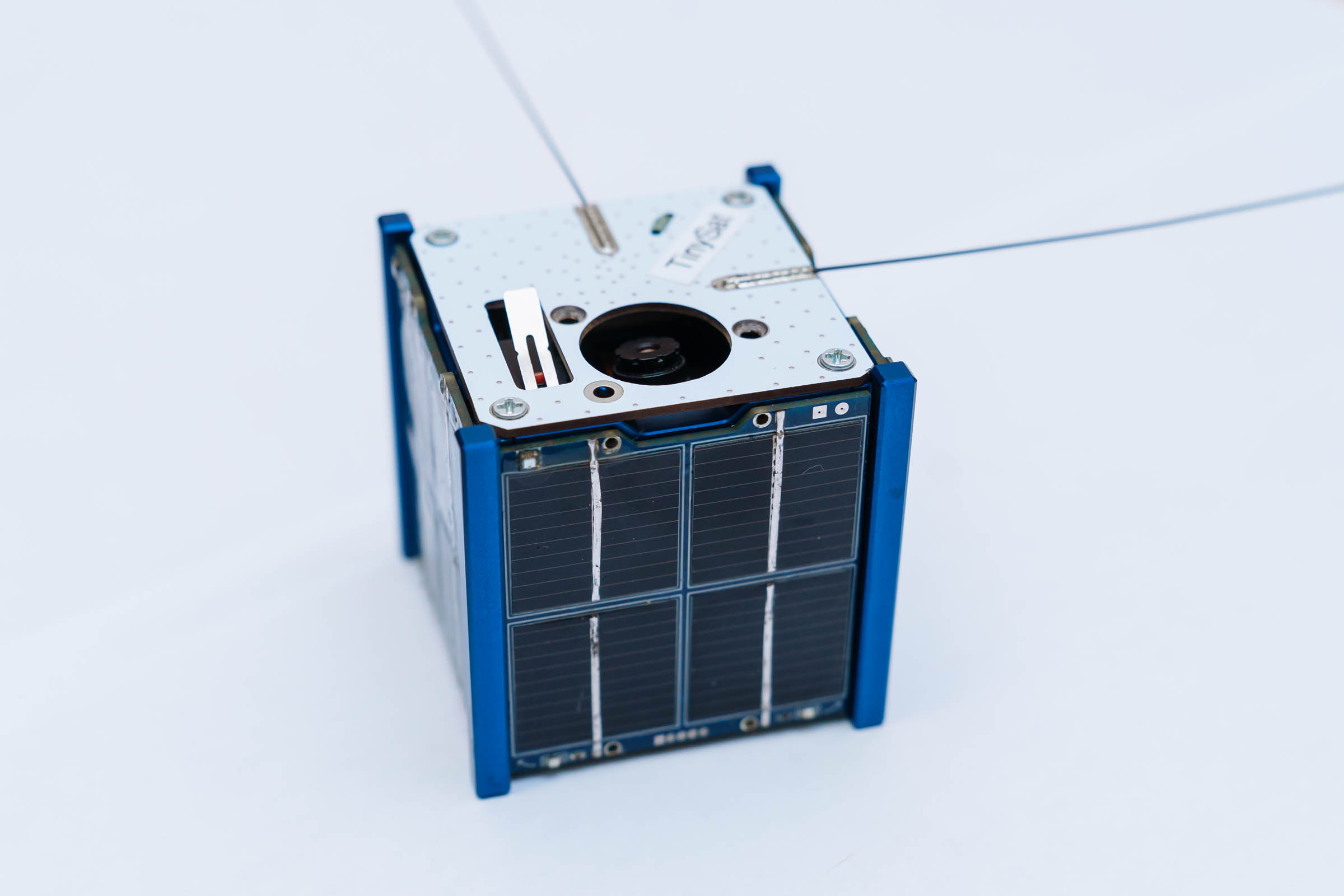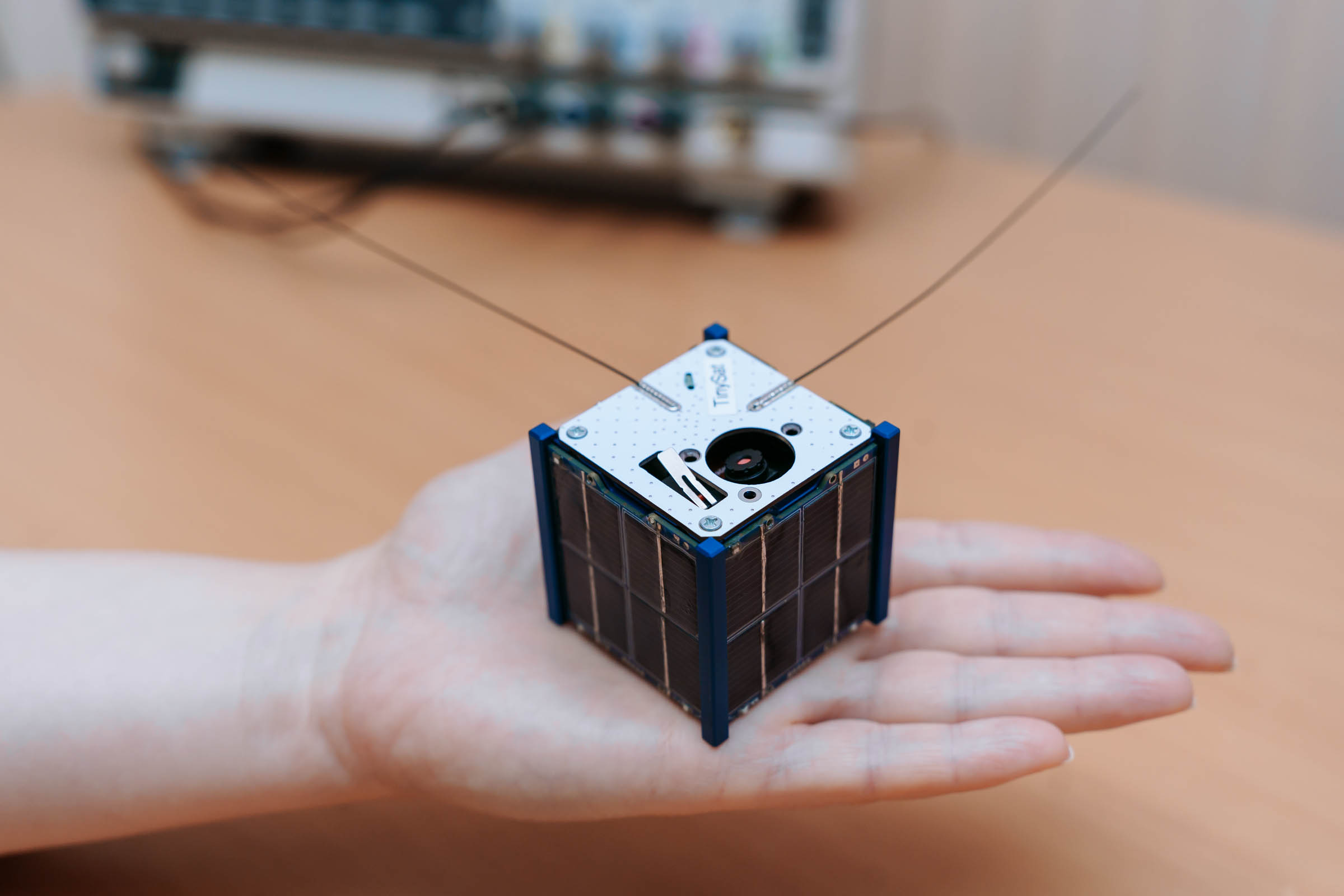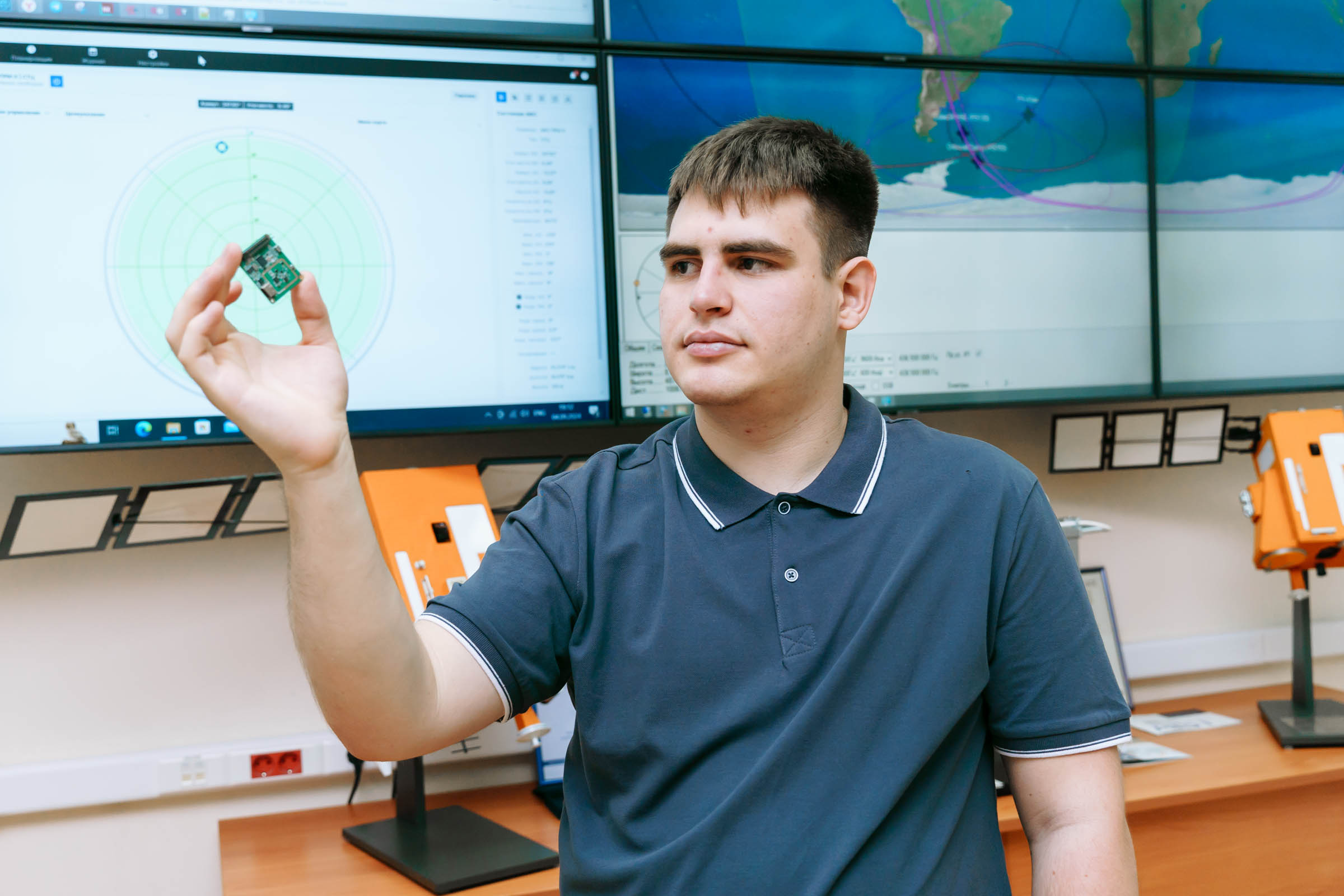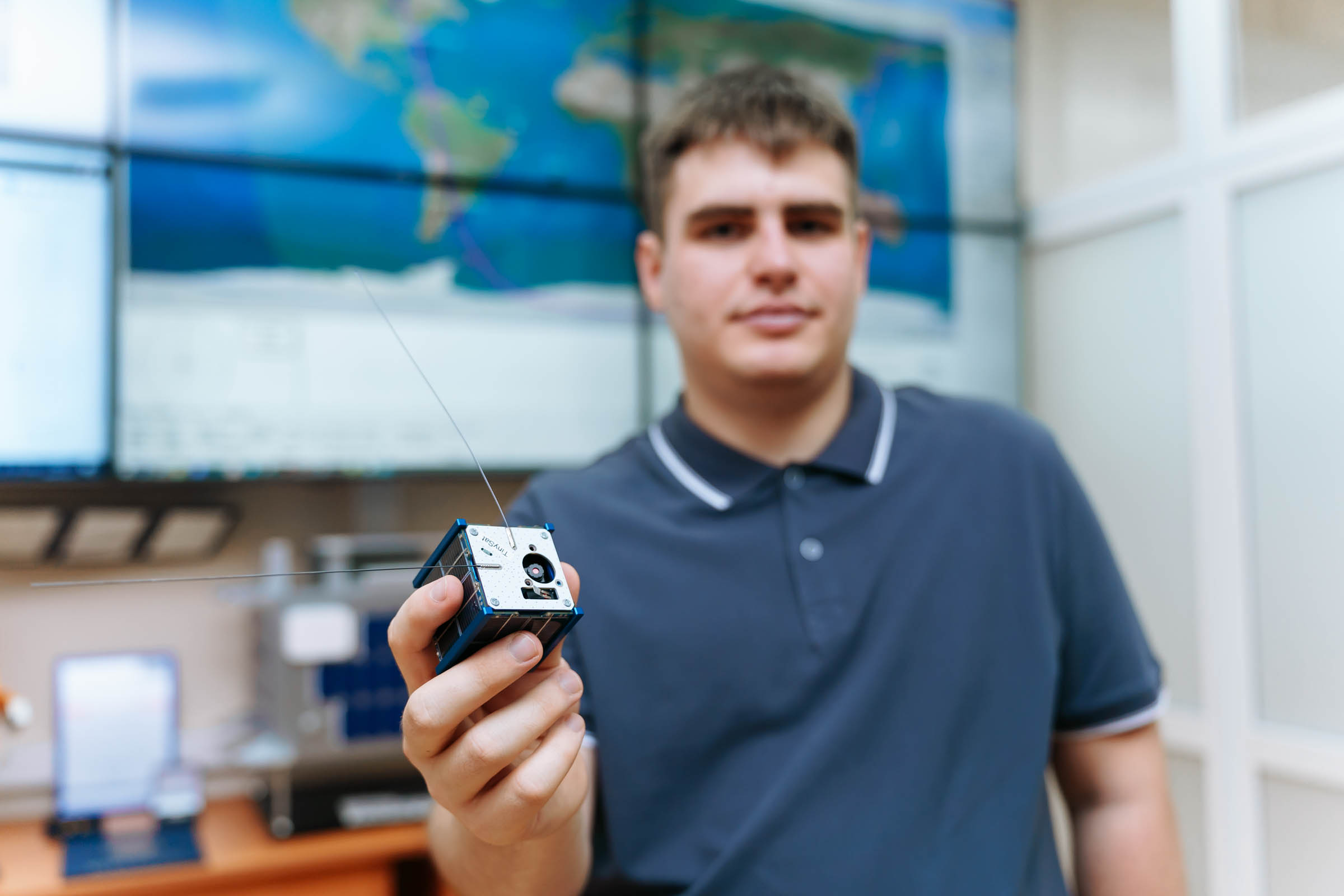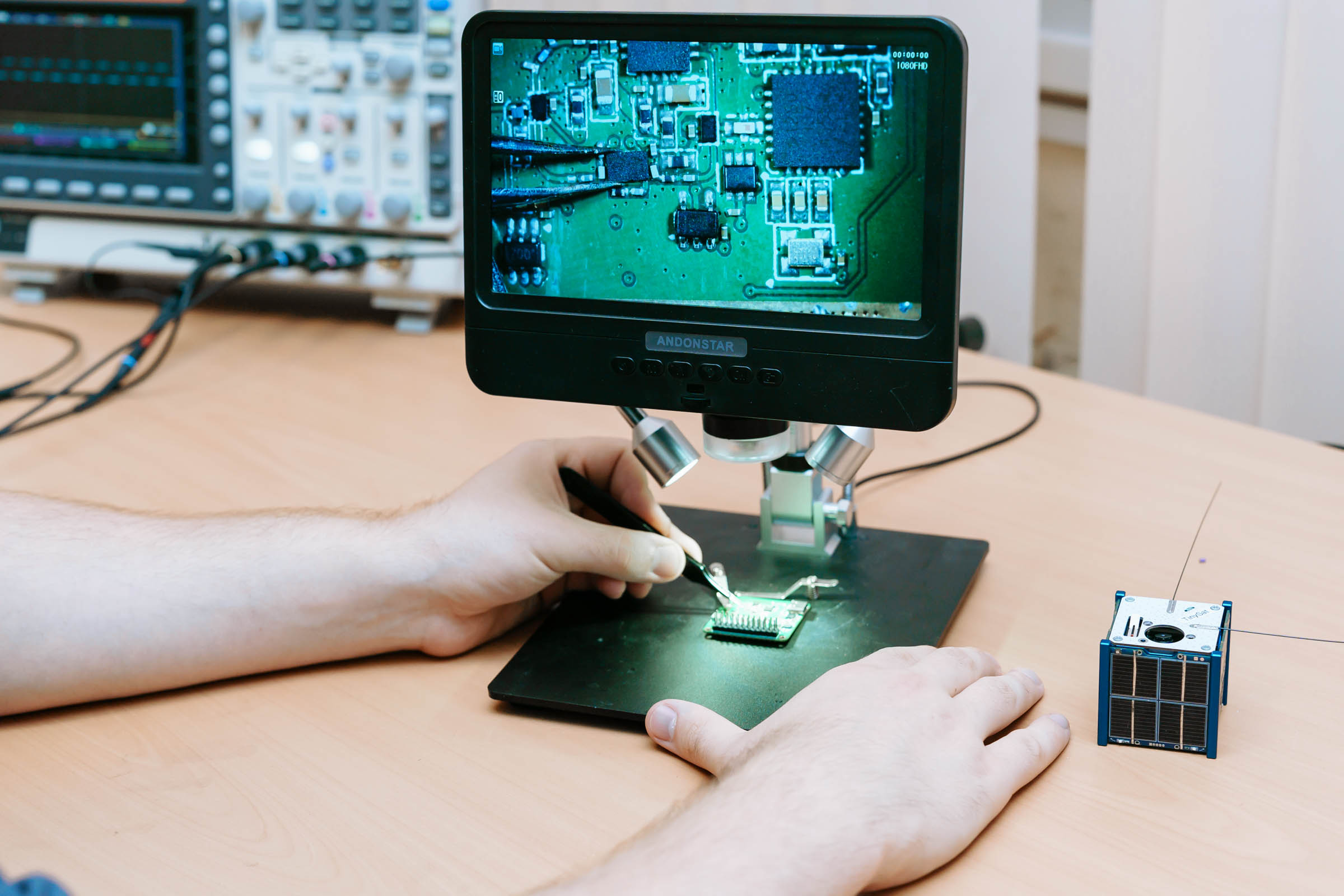Samara University’s young scientists and engineers has developed a prototype of the world’s most compact and lightweight high-speed radio transmitter for tiny space satellites — picosatellites of the TinySat or PocketQube formats. These miniature spacecrafts usually consist of one or two “cubes” measuring only 5x5x5 cm, so it is rather difficult task to fit a transmitter with sufficient power and high data transfer rate inside this “kid.”
According to the project, all components of the Samara radio transmitter will be able to be placed on the electronic board smaller than half a bank card, measuring 4x4 cm, and the total weight of the device, capable of confidently communicating with the Earth from outer space orbit, will not exceed 15 g, which is several times less than that of foreign analogues. The project is implemented in the framework of the Advanced Aerospace Engineering School (AAES) and has received financial support from the Innovation Assistance Fund in the form of the grant in the amount of 1 million rubles. The project implementation period is 1 year.
“The goal of our project is creating and testing a high-speed radio transmitter adapted for outer-space applications on ultra-small satellite platforms. This radio transmitter will be able to solve the problem of expanding the bandwidth of a spacecraft’s radio channel and will allow transmitting an order of magnitude more information than transmitters used on platforms of ultra-small satellites, such as PocketQube or TinySat, currently do. Our development will contribute to improvement of the research capacity of these platforms: picosatellites, due to their small size, are much cheaper to launch into space than larger devices, and available high-speed communication channel will make them more suitable and popular for conducting a wide variety of space research in outer space. If, for example, an entire grouping of picosatellites equipped with these transmitters is launched into orbit, on the Earth, the satellite Internet of Things network will be possible to be deployed. This transmitter is also suitable for various terrestrial devices, e.g. for quadcopters, which require significant amounts of information to be transmitted over the radio channel, with small weight and size of the transmitter,” told us Sergey Ivlev, the project manager and engineer at Samara University’s AAES.
According to Sergey Ivlev, the agreement that the Samara development will become part of a promising satellite platform of one of Russian private space companies planning to create an orbital grouping of ultra-small satellites to serve subscribers on the Earth and to transmit data from remote terminals, has been reached. The transmitter is also suitable for applying on stratospheric probes and atmospheric research vehicles.
Due to its unique scope of application, Samara scientists could not find any available commercial analogues to their development. Picosatellites, as a rule, have less powerful and less high-speed transmitters that transmit data at a maximum speed of tens of kilobits per second. The peak speed of the Samara transmitter will be up to 1.2 Mbit with the prospect of increasing up to 2 Mbit. By standards of ordinary terrestrial Internet users, this is, of course, not much, but for space and for tiny picosatellites, it is quite a decent speed.
“We compared specifications of our transmitter with those of popular high-speed foreign systems designed for using on satellites of a larger format than picosatellites — CubeSats, including compared with such radio transmitters as the S-Band Transmitter made by the Bulgarian company “EnduroSat,” the TX S-Band of the Dutch “ISIS,” and the TX-2400 of the British “Clyde Space.” The comparison shows that our system will be the lightest and most compact, for example, in weight it will be almost five times lighter than the lightest transmitter (TX-2400), weighing 70 g. But the main thing is that, due to the use of modern component base and integrated technologies, such a transmitter is able to function efficiently even on tiny satellites with a very restricted energy consumption limit,” said Sergey Ivlev.
The transmitter will operate in the S-band used for terrestrial and satellite radio communications. The output power of the transmitter is 30 dBm (1 W), the central carrier frequency is 2.45 GHz, FLRC modulation technology. The RF section will be assembled on the basis of commercial electronic components with high-extent integration, which will increase efficiency of the device. The software specially created for this transmitter will allow the device to adapt to current parameters of the outer-space environment, and will even be able to partially compensate for inevitable over time degradation of the transmitter parts. It will also be possible to remotely update the firmware of both the transmitter and the satellite itself from the Earth.
“The system will monitor a large amount of internal data by adjusting power of the amplifier, depending on the measured parameters, monitor degradation of components and compensate for changes in parameters of the RF section. The project will also use the Ranging Engine technology, which allows measuring the distance between the transmitter and the base station by using special offset coding: this will make it possible to more accurately determine the spacecraft location in orbit, and when used in terrestrial conditions, on a quadcopter, the transmitter will partially do without a GPS system in the flight mode,” stressed Sergey Ivlev.
At present, work on individual assemblies of the device, with software being debugged. Pre-production samples of the radio transmitter are scheduled to be produced and tested before the summer of 2025.
 RU
RU  EN
EN  CN
CN  ES
ES 